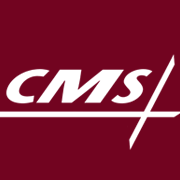CMS Proposes to Update Medicare Reimbursement Rates for OPPS
CMS is calling on stakeholders to comment on a proposed rule that would update Medicare reimbursement rates and programs for hospital outpatient and ambulatory surgical centers.

- According to a press release, CMS has proposed changes to Medicare reimbursement rates and policies in the Hospital Outpatient and Ambulatory Surgical Centers prospective payment systems. The agency stated that the proposals account for stakeholder feedback and aim to improve care quality beyond hospital walls.

“The items in this proposal are designed to improve care and value when Medicare beneficiaries receive care in an outpatient setting,” said Andy Slavitt, Acting CMS Administrator. “Today’s proposed updates better support physicians in providing beneficiaries with the right care at the right time.”
In the proposed rule, CMS outlined the implementation of Section 603 of the Bipartisan Budget Act of 2015, which will identify off-campus hospital departments as site-neutral and stop paying them under the Outpatient Hospital Prospective Payment System.
CMS would reimburse off-campus sites, or provider-based departments, under the Medicare Physician Fee Schedule for the majority of services and items starting in 2017, stated the proposed rule. By 2018, the agency proposed to pay provider-based departments following a Part B payment system other than the Outpatient Hospital Prospective Payment System.
Some services and items would be excepted from the proposed rule and paid under the prospective payment system, including those furnished at an emergency department, performed and billed by an off-campus provider-based department before November 2, 2015, and furnished at a hospital department within 250 yards of a remote location of the hospital.
Stipulations in the proposed rule regarding site-neutral payments were designed to discourage hospitals from acquiring physician practices in order to bill under higher rates, which was led to greater price variation for medical services. The implementation of Section 603 could reduce Medicare spending by almost $500 million in 2017.
CMS has also proposed several updates to the Outpatient Prospective Payment System that would increase the payments rates by 1.6 percent for hospitals and 1.2 percent for ambulatory surgical centers in 2017.
As part of the modifications, CMS would add 25 Comprehensive Ambulatory Payment Classifications, which are encounter-level payments for certain primary services and all adjunctive and secondary treatments. The new classifications include nerve procedures, excision, biopsy, incision, and drainage services.
Bone marrow transplants would also become a Comprehensive Ambulatory Payment Classification. The new classification would allow providers to include all services in one claim and the payment would represent all services associated with bone marrow transplants.
The agency has also proposed policy changes to packaged services, including packaging at the claim level rather than by the date of service to ensure that services provided during a hospital stay lasting longer than one day are properly packaged.
Under the rule, certain advanced diagnostic laboratory tests would be considered an exclusion to the laboratory packaging policies, like molecular pathology tests, because it is “less tied to a primary service in the hospital outpatient setting than the more common and routine laboratory tests.”
The rule would also discontinue the L1 modifier, which allows for separate payment of laboratory tests when they are the only items on a claim or are unrelated to other services on the claim.
Additionally, CMS would modify the Hospital Value-Based Purchasing Program to address concerns from the healthcare industry surrounding pain medications. The agency would eliminate the pain management component of the patient survey beginning in 2018.
Some stakeholders told CMS that the pain management questions influenced providers to overprescribe pain medications to prevent potentially negative scores for performance payments. While the agency is not aware of research that links the questions to overprescribing, it is devising alternative questions for future surveys.
The proposed rule would also add two claims-based and five survey-based quality measures to the program, including admissions and emergency department visits for chemotherapy patients, hospital visits after outpatient surgery, and various patient experience measures.
The Ambulatory Surgical Center Quality Reporting Program would face similar changes to its program. CMS would add seven quality measures, such as normothermia outcome, unplanned anterior vitrectomy, and several patient experience measures.
CMS would publish performance data from the quality reporting programs on the Hospital Compare website starting in 2018. Providers would be able to review measure data before publication, reported CMS.
The proposed rule also includes changes to organ procurement policies, streamlining the process for acquiring organs for transplants. The agency intends to eliminate some written information that is currently required to be transported with the organ and align its policies with established organ transplant organizations, such as the Scientific Registry of Transplant Recipients.
In addition, the proposed rule would promote flexibility in EHR incentive programs. Eligible professionals, hospitals, and critical access hospitals would only need to report to EHR incentive programs for a 90-day period in 2016 and some measures would be eliminated starting in 2017.
Healthcare stakeholders are encouraged to submit feedback on the proposed rule by September 6, 2016.
To view the complete proposal, click here.
Dig Deeper:
• Why Site Neutral Payment Reimbursements Are Incomparable
• How to Boost Ambulatory Revenue Cycle Management Performance
